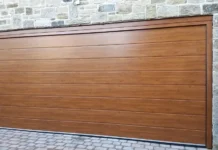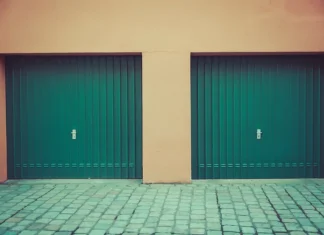Many rental property owners are forced to make their cash stretch as far as possible when they first start out. After all, the profits will only start rolling in once you have tenants in situ.
Your prospective residents will be understandably discerning; after all, this is where they are planning to live. They want clean spaces and robust furnishings to help them relax and easily go about their daily lives. So – how do you do it?
Planning to become a landlord on a shoestring budget? Or have you just purchased a house or flat at auction and want to refurbish the property in the most cost-efficient way possible?
In this article, we look at a few ways in which you can renovate or refurbish a rental property cheaply before putting it on the market – without scrimping on quality.
Do It Yourself
Labour is one of the easiest areas in which you can make big savings – but only if you have the time and skill to put the work in yourself!
Take stock of what you already know how to do, then spend time doing research into all of the other tasks required before deciding whether or not you can tackle it alone or with the help of a few friends.
After all, if you mess up, you’ll likely have to spend far more on rectifying your mistakes.
Go Neutral
It’s usually best to choose an off-white or cream colour for your interior walls and other neutral tones for fittings and flooring.
This is often more appealing to potential tenants; it’s easier for them to visualise their belongings in the space, since bolder base colours are far more prescriptive. What’s more, these materials are often cheaper and easier to replace if any damage occurs.
Add Mirrors
Opt for reflective surfaces like mirrors. They’re an easy and practical element of decor that also serves to give the illusion of roomier living spaces.
Choose Easy-Clean Surfaces
It can be tempting to opt for the very cheapest paints, flooring options and worktops to keep your budget down. However, the finish they offer is usually much easier to damage and harder to clean.
Instead, we recommend going for tough paints and other materials that are hard-wearing. This means you’re less likely to have to spend money repairing or replacing them between tenancies – or, worse, multiple times during a resident’s time in the property.
Invest in Sturdy Furniture
Much like the paints and decorative materials you pick, your choice of furniture should focus on longevity rather than immediate cheapness.
Particularly in today’s society, with more people working from home, the items you place in your property will need to withstand significant wear and tear. Flimsy items will need replacing regularly, so your expenses will keep rising.
Find furniture that is strong, tough and easy to clean. After all, buying cheap means buying twice. What’s more, the nicer the furniture is, the more a tenant is likely to respect it and treat it with care.
Laminate and Panelling
Carpet is easy to damage and stain, but hardwood flooring, tiling and flags can get very expensive. In recent years, the quality and durability of laminate flooring has come on in leaps and bounds – and it can be very cheap if you know where to look!
Go for an attractive and robust laminate for easy mopping and sweeping in spaces like hallways and kitchens.
You can also speed up the process and reduce the cost of tiling materials and labour with tile panelling.
Upcycle
When furniture in your property is used or damaged, your immediate reaction should not be to throw it out immediately. This is terrible both for the environment and your wallet!
Instead, be prepared to invest some time on maintenance, repair and redecoration. For example, kitchen cabinet doors are very easy to restore and repaint, offering a new lease of life.
Squeaky chairs can have screws and bolts tightened, and in some cases could even be reupholstered for less than the price of a new model. It may be worth the effort to save a chunk of cash.
Buy in Bulk
If you manage multiple properties, it might be worth going to a wholesaler to pick up all of the furnishings, fixtures and fittings you need. You’re likely to save a great deal when furnishing as many spaces as you can at once.
A word of warning, however – it’s important to be sure of the quality of the items before you take the plunge. Your chosen wholesaler may specialise in supplying for rental properties, but some of their beguilingly cheap items may be very flimsy!
Always make sure to inspect items in person before committing.
Don’t Over-Furnish
While some potential tenants may have very little in the way of furniture or decorative items, others may be bringing quite a lot with them.
If you’re planning to provide a furnished property, it’s best to invest only in the basics – white goods, a table and chairs, a sofa, beds, wardrobes and curtains.
Not only is this cheaper, but if you place too much furniture around, the chances are that the tenant will need to find somewhere to store it while they use their own. This makes your items more likely to incur damage. It will also make it harder to keep track of your inventory.
It’s also a good idea to avoid introducing your own accessories or wall art for the same reason. Instead, provide picture hooks or other features to allow your tenants to put their own stamp on the space without causing damage to the walls.
Fix Problems Now Rather Than Later
Maintenance issues will only become exacerbated over time. They won’t go away if you ignore them – and the worse they get, the more expensive they will be to rectify.
Not only that, but if your property is poorly maintained, you won’t be doing your duty when it comes to the wellbeing of your tenants. This is morally wrong to begin with, of course, but it may also mean a higher turnover and poor online reviews – resulting in lower uptake.
The above tips and tricks should stand you in good stead to save money both in the short term and the long term when it comes to furnishing a rental property. The key takeaways are to opt for simplicity and neutrality, and to invest in fittings, fixtures and furniture that will last.












